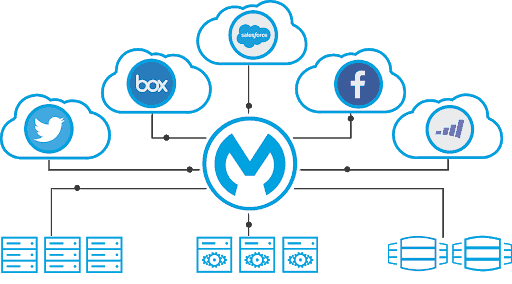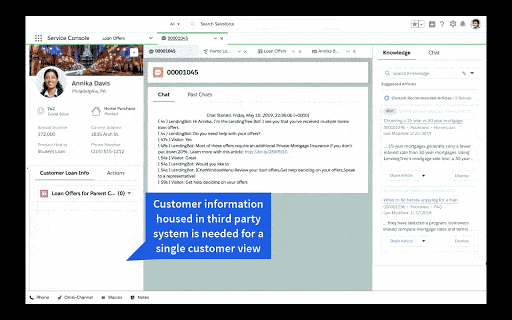Did you know 69% of service leaders say a single customer view provides more cross-sell and upsell opportunities? That’s right—customer service as a revenue generator! Yet, 70% of service agents can’t find all the information they need to do their job on one screen.
Without a single customer view and real-time insights, organizations struggle to deliver the quality experiences that customers are looking for today. Therefore, integration to third-party systems and applications becomes increasingly important as a way to differentiate your service and achieve a holistic view of your customer your organization needs.
What is a single customer view?
A single customer view means that your organization has a comprehensive picture of the customer through and across every channel. Additionally, customer data is aggregated and presented in a way that is both accessible and actionable to the wider organization, no matter where the data resides.
With a single customer view, your organization and service reps are able to:
- Engage with customers on their preferred channel
- Answer questions more effectively to promote faster issue-to-resolution
- Be more personalized and proactive with their service
And in our increasingly connected world, service representatives need to be empowered with such information and tools to provide the level of service customers now expect.
Why is it so difficult to achieve?
Ordinarily, the data needed about the customer is housed in different systems making it difficult for organizations to achieve a single customer view. Systems and applications are also typically connected using custom code, making the infrastructure rigid and difficult to adapt to change. Without integration to key systems such as ERP and on-prem databases, it is impossible to create a single view of customers within one screen. This means that service agent reps have to swivel between many screens to get simple customer information, leading to a disjointed digital experience for the customer on hold and an unproductive experience for the agent who is spending more time on manual processes.
For data to be aggregated into a single unified platform, information needs to be brought in from systems such as CRM, financial suite, ERP, third-party database, chat, and predictive AI as represented in the image above. Integration and the ability to unlock siloed data in a way that makes it easily accessible thus becomes the key to a single customer view.
Salesforce integration made easy: Using MuleSoft and Service Cloud to create a single customer view

MuleSoft’s Anypoint Platform enables organizations to synchronize data and automate transactions between Salesforce Service Cloud, ERP, and other third-party systems, whether on-premises or in the cloud. Service Cloud helps deliver customer success because it offers a unified workspace with the ability to have a complete view of the customer within one console.

Together, MuleSoft and Service Cloud help enable a single customer view for organizations by using MuleSoft to expose the critical customer data and surfacing it into Service Cloud. Teams can use Anypoint Platform to create API specifications using API Designer to specify the third-party information they would like to expose and create an API that is then hosted and easy to discover on the Exchange. Using clicks not code, Flow Designer, a web-based environment, then makes it easy to expose the needed customer information, pulling it into Service Cloud. In doing so, your organization is able to leverage the various pre-built connectors and templates that are all aimed to increase the speed of development and make Salesforce integrations easy for your teams.
If you’re interested to learn more about how your organization can leverage MuleSoft and Service Cloud to create a single customer view, please watch our upcoming webinar!









